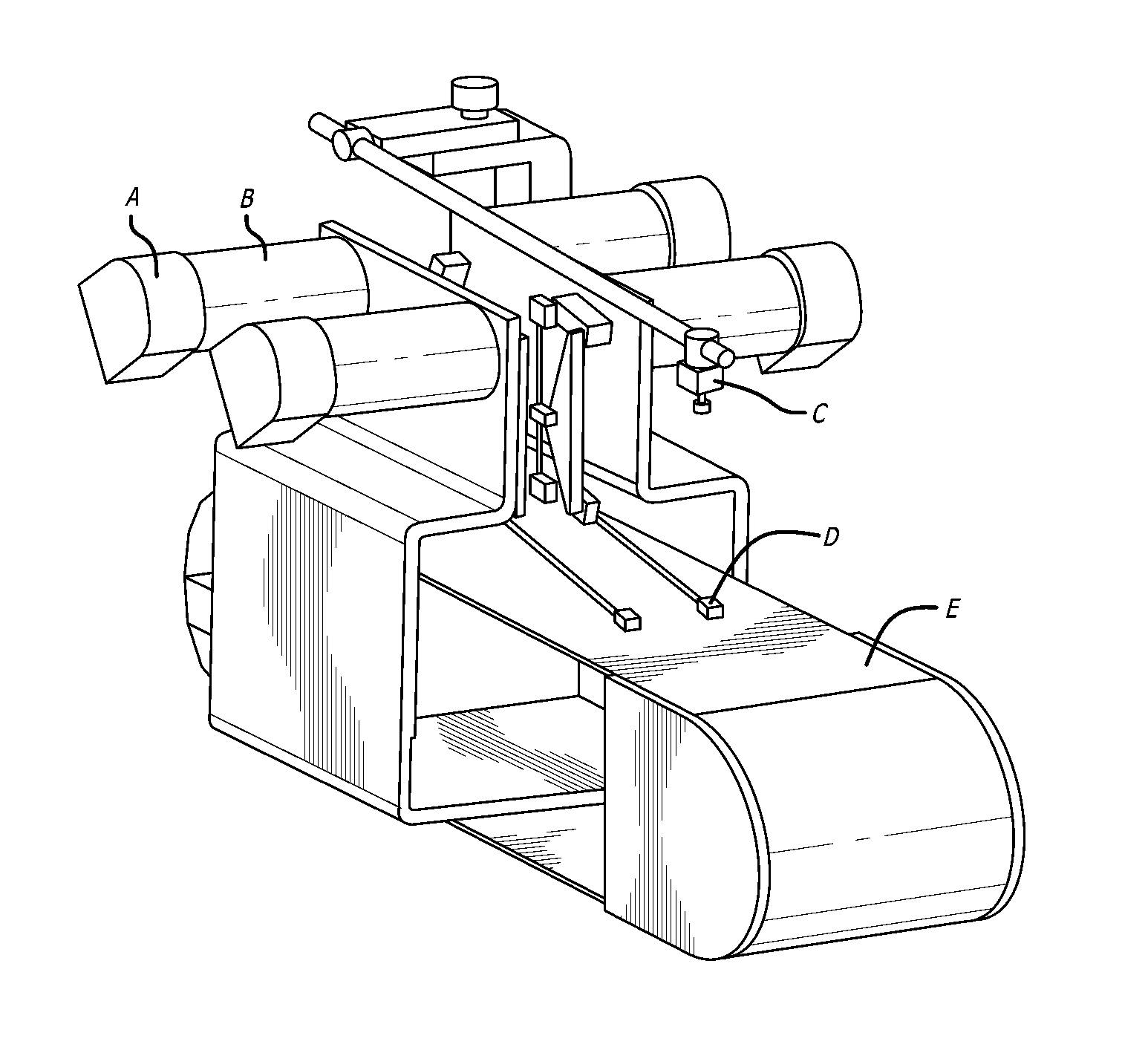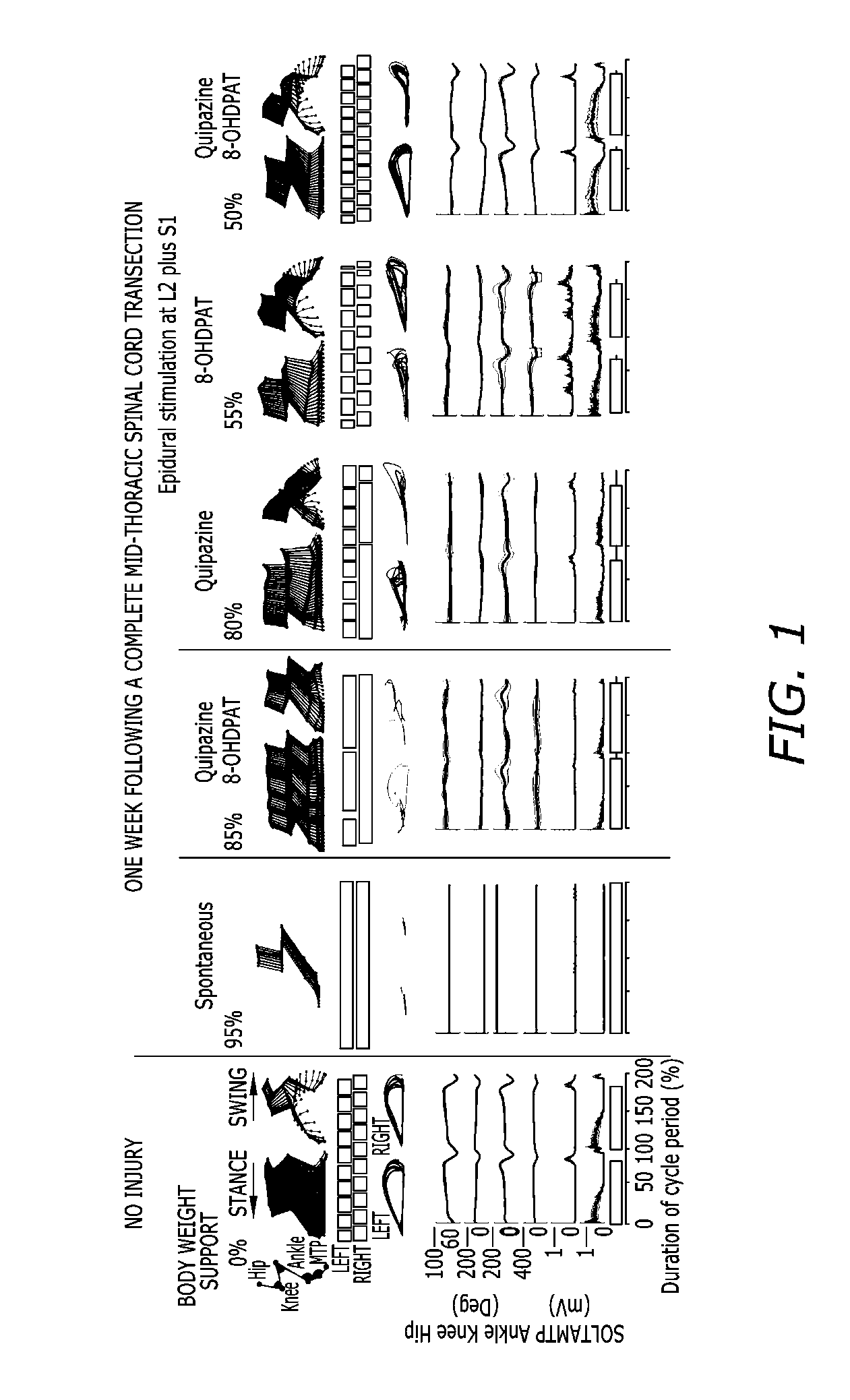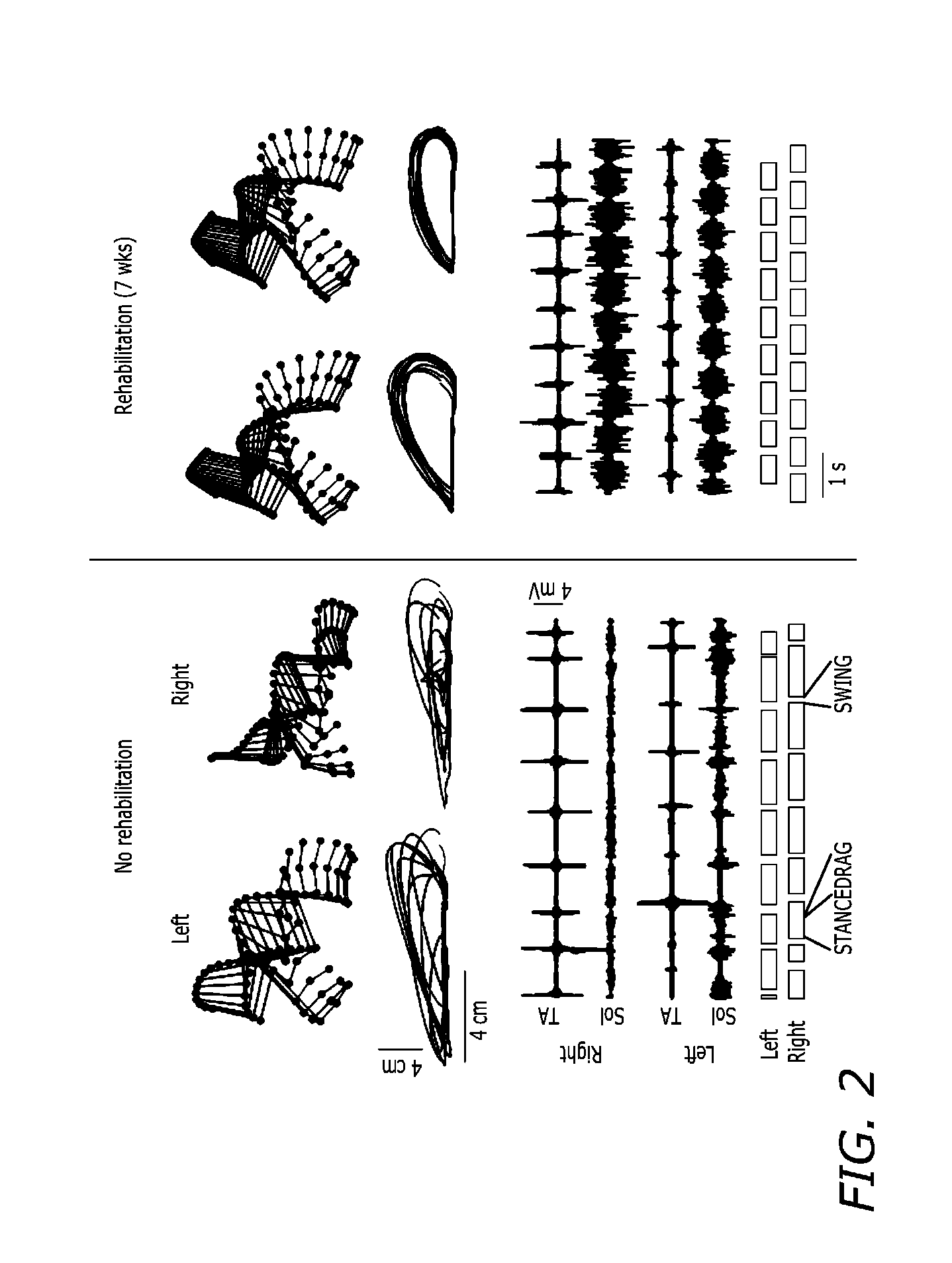High density epidural stimulation for facilitation of locomotion, posture, voluntary movement, and recovery of autonomic, sexual, vasomotor, and cognitive function after neurological injury
a high density, epidural stimulation technology, applied in the field of neurosurgical rehabilitation, can solve the problem of induced neurological signals below the first stimulation threshold
- Summary
- Abstract
- Description
- Claims
- Application Information
AI Technical Summary
Benefits of technology
Problems solved by technology
Method used
Image
Examples
example 1
Epidural Stimulation of the Lumbosacral Spinal Cord Enables Independent Standing, Voluntary Movement, and Assisted Stepping in a Paraplegic Human
[0104]This example demonstrates that the human spinal cord circuitry has the ability to generate postural and locomotor patterns without supraspinal motor input. This capability and voluntary movement can be manifested when the excitability of these networks is modulated by epidural stimulation at a level that enables proprioceptive input to provide a source of neural control to elicit the motor pattern appropriate for the task.
Introduction
[0105]The mammalian spinal cord can generate locomotor output in the absence of input from the brain. See Grillner S., Neurobiological bases of rhythmic motor acts in vertebrates, Science, 228:143-149 (1985); and Rossignol S, Barriere G, Frigon A, Barthelemy D, Bouyer L, Provencher J, et al., Plasticity of locomotor sensorimotor interactions after peripheral and / or spinal lesions, Brain Res Rev, 57(1):228...
PUM
 Login to View More
Login to View More Abstract
Description
Claims
Application Information
 Login to View More
Login to View More - R&D
- Intellectual Property
- Life Sciences
- Materials
- Tech Scout
- Unparalleled Data Quality
- Higher Quality Content
- 60% Fewer Hallucinations
Browse by: Latest US Patents, China's latest patents, Technical Efficacy Thesaurus, Application Domain, Technology Topic, Popular Technical Reports.
© 2025 PatSnap. All rights reserved.Legal|Privacy policy|Modern Slavery Act Transparency Statement|Sitemap|About US| Contact US: help@patsnap.com



